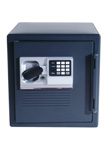 Loss prevention, as defined by Wikipedia, encompasses all profit (economic) preservation activities across the whole retailing business spectrum. It is a necessary management activity for brick and mortar retailers, as well as the increasing population of online retailers. Loss prevention is critical , especially as an organization faces a shortfall in its growth and gross profit margins. According, to Retail Systems Research (RSR), at the peak of the recession, research showed that, “44 percent of survey respondents reported their shrink management [loss prevention activity] had risen as a result of the economy.”
Loss prevention, as defined by Wikipedia, encompasses all profit (economic) preservation activities across the whole retailing business spectrum. It is a necessary management activity for brick and mortar retailers, as well as the increasing population of online retailers. Loss prevention is critical , especially as an organization faces a shortfall in its growth and gross profit margins. According, to Retail Systems Research (RSR), at the peak of the recession, research showed that, “44 percent of survey respondents reported their shrink management [loss prevention activity] had risen as a result of the economy.”
Independent Retailers Increasingly Concerned with Loss During Economic Crisis
When you are already down and out, who wants to lose more? Therefore, a recession, such as the Recession of 2009, puts the pressure on independent retailers to improve loss prevention activities. Loss prevention activities encompass the securing of cash management systems, implementing safety monitoring and enforcement, providing inventory accountability, developing security policies and integrating security systems. For example, taking a closer look at security systems as a part of loss prevention efforts, reveals that nearly 98 percent of companies claim to use video surveillance in their stores. Furthermore, as reported in March on blog.wholesalecentral.com, survey results by SecurityMagazine.com indicated that:
- 98 percent say that video surveillance reduced internal loss (employee theft, etc.)
- 75 percent claim that video surveillance reduced external loss (shoplifting, return fraud, etc.)
The Recession of 2009, debatably behind us with a slight recovery in the stock market, has research companies such as RSR wondering if the pressure to improve loss prevention tactics has lessened because of the small influx in sales. RSR’s interest stems from the fact that, “A third of respondents report growth and gross margin shortfalls as the most influential challenges driving loss prevention initiatives.” The results, however, point to continued fear of employee and customer theft. RSR’s research, “Loss Prevention in a Post-Recession World,” reports that, “Employee theft in one form or another represents two of the top three sources of shrink, while shoplifters (customers stealing merchandise) round out the top three choices. Employee theft of merchandise is of greatest concern to mid-market retailers, peaking at 86 percent and 92 percent among retailers with annual revenue of $51 million to $500 million and $500 million to $999 million respectively.” Trust in employees is a sensitive issue for small businesses, giving worth to monitoring tips and solutions used to keep tabs on employees. For instance, ITBusinessEdge.com recently issued seven important monitoring tips for small businesses, which leads us to those of you that run your retail business via the Internet and who are susceptible to digital misconduct from employees.
Online Retailers Suffer Losses Too
According to ITBusinessEdge.com, “The costs associated with data breaches caused by careless or malicious employees can be detrimental to a small business – insider breach incidents cost businesses an average of $3.4 million per business per year.” Keep your friends close, but keep your employees closer as you use the following seven monitoring tips:
- Evaluate security procedures
- Limit website access
- Restrict user privileges
- Restrict file transfers
- Track files on laptops
- Install remote access software
- Set notification triggers
Unfortunately, employees aren’t the only culprits affecting the bottom line. As reported on blog.wholesalecentral.com in November 2010, “Anyone who buys or sells on the Internet may be vulnerable to online fraud….The business losses from these crimes totaled $559.7 million in 2009, up 112 percent.” As profits pick up, online retailers are advised to increase their loss prevention activities because increased profit means increased fraud. Don’t let a little economic recovery leave your bottom line in ruins and your loss prevention efforts neglected.
